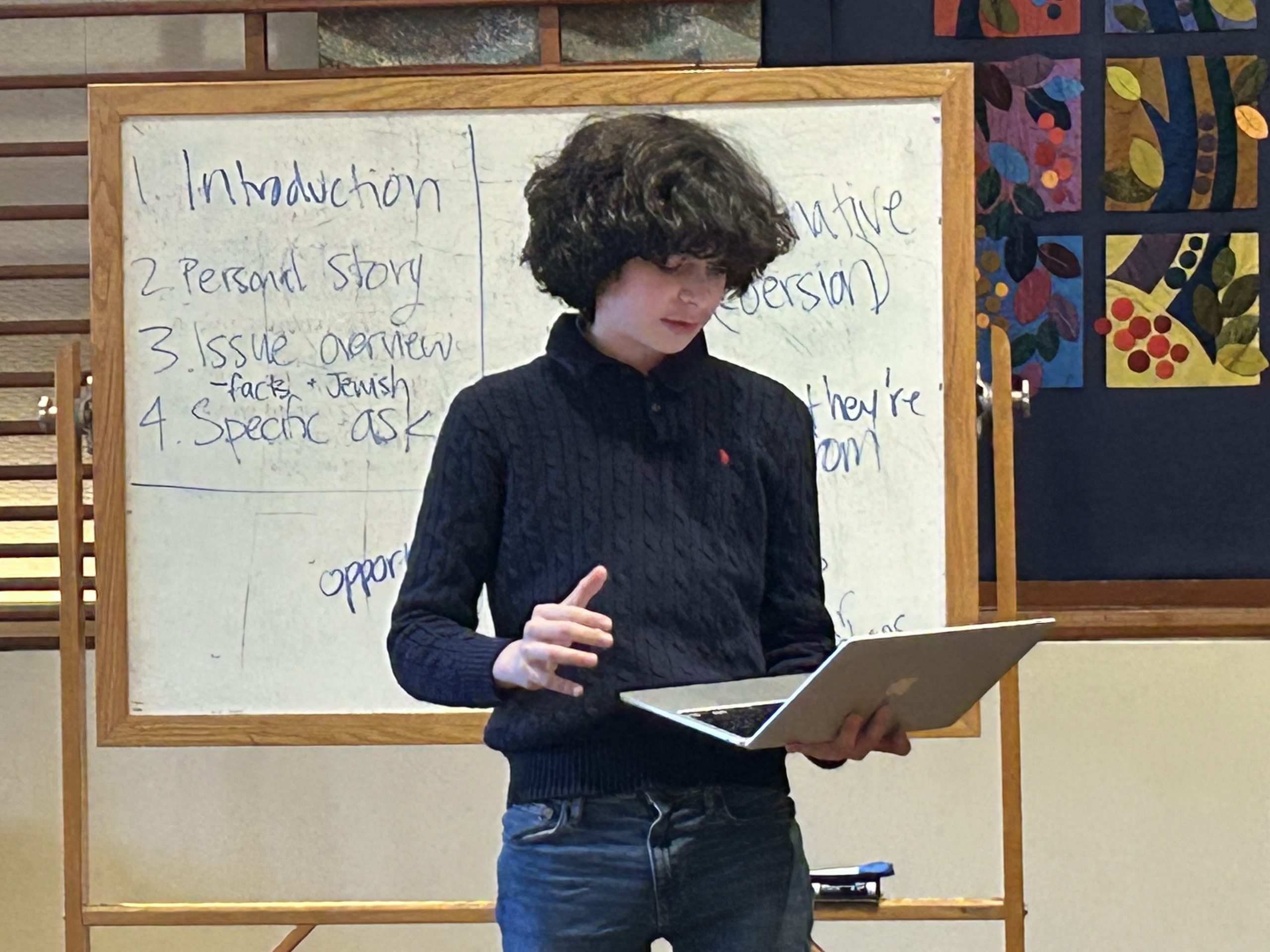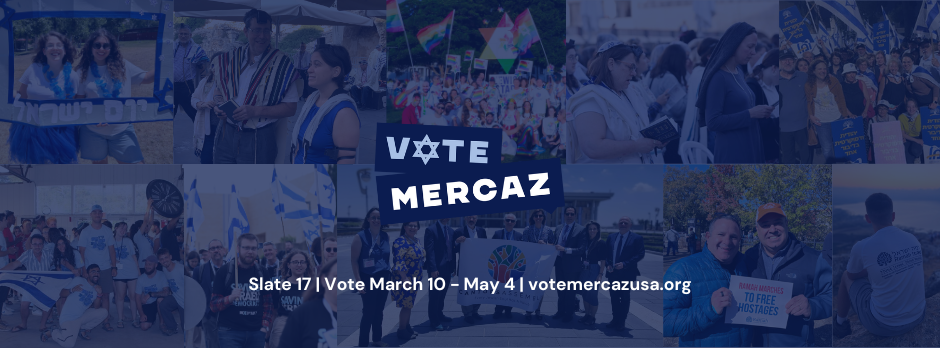
Go to any gathering of synagogue leaders these days, and you will inevitably hear people talk about the challenges they face in creating deeper, more meaningful engagement opportunities for their members.
At the USCJ Large Congregations Conference in January, we wanted to learn more about what such an engagement campaign might look like. Rabbi Lydia Medwin of The Temple in Atlanta, who, along with Ron Wolfson and Rabbi Nicole Auerbach, recently published The Relational Judaism Handbook, spoke about their campaign to engage a large segment of their congregation in small groups.
The Temple, founded in 1867, is the oldest synagogue in Atlanta and a bastion of classical Reform Judaism. Many changes occurred in society and Judaism over the past several decades, and The Temple had not kept up. When Rabbi Peter Berg arrived in 2008, he worked with the leadership to explore how The Temple should evolve to address the changing needs of its members. Rabbi Medwin was hired later as The Temple’s first director of congregational engagement and outreach.
In most congregations, the senior staff creates programs and tries to recruit members to attend. The Temple turns this model upside down. They begin with what their members want to do, not what the staff thinks they should do. They invite members to request a group, or to offer to lead a small group. Then they recruit and train volunteer coaches to support the various groups that have formed. This model returns the power to the congregants. The staff person is a resource and facilitator for this engagement campaign, not a program director.
Community as a Jewish Value
From its earliest sources, Jewish tradition has always valued community. In chapter 2 of Genesis, the first five books of the Torah, we read, “It is not good for a person to be alone.” Our traditions and practices understand and promote the strengthening of communal bonds.
In practice, The Temple understood that in our highly interconnected world, many people do not feel connected. Rabbi Medwin noted that several members expressed feelings of loneliness and anonymity, and they were not at all sure that the synagogue was the place where they could meet their social needs.
The Temple sought to prove those people wrong. They knew that Jewish traditions and rituals, and our primary institution, the synagogue, can help people build meaningful relationships. And people do not need to look only to a rabbi or other leader for the answers; they can turn to one another to get their most deeply held needs met.
Small Groups: Launching the Campaign
In this segment we will review The Temple’s Plan and explore how it aligns with our USCJ Sulam leadership experiences.
Step 1: Get clear on your “why” with the clergy and lay leadership
Temple engagement campaign leaders were very clear about the reasons they were engaging in this campaign, and then communicated these reasons clearly to the Executive Committee and the board. This led to the creation of an Engagement Committee.
Step 2: Listening campaign – Intentional conversations around 3 questions
Engagement leaders recruited hosts and invited members to gather at the synagogue and in homes. They asked a few critical questions:
- When was a time when community was really there for you or worked for you? When was a time when it wasn’t?
- If ten people would follow you, where would you take them? What would you want to do together?
- At what crossroads are you in your life right now?
USCJ Community Listening Conversations
We share The Temple’s sense of purpose. At USCJ, we have created a tool we call Community Conversations, where we gather people together in groups to hear from them about what engages them in the synagogue. We ask them when they felt the synagogue was at its best and we ask about peak experiences that shaped their lives. The Temple’s listening campaign, like our Community Conversations, starts with strengths. In USCJ’s Sulam leadership materials, we argue that a “B” quality idea with an “A” level of commitment can succeed, but an elegant initiative designed by others without the commitment of people to work on it may well go nowhere.
In our research, we have found that only about twenty percent of the congregation is very involved. Contained in the other eighty percent of the membership, there are members whom we would call “seekers.” These are people who, while not very active in the synagogue, are at a transitional moment in their lives. They are looking for what is next. It can be a transition from parenting to being empty-nesters or from working to being retired. It may be a health crisis or an economic crisis, the loss of a loved one or a loss of faith. Asking this question helps us discover who might be at a point in their lives where they have the energy to step into conversation and community.
Step 3. Reporting Out: The Big Reveal
After 4 months of a listening campaign, The Temple did a “Big Reveal” of what they had learned. Then they began to recruit leaders for the groups and coaches to support them.
Step 4: Support, train, and celebrate your leaders
They then held training sessions once or twice per year. Leaders saw every program as an opportunity to train the congregation on how to be more relational, incorporating relational components into every meeting and gathering.
They recruited leaders during the summer and early fall months and trained them before the High Holidays. They launched the groups after the Holidays. They planned to meet 6-8 times during the program year, and during the summer, the groups made decisions about the following year.
The program was sensitive to the needs of their members. They made it easy to join and provided easy “off ramps” as well. Leaders at The Temple felt people needed to make a minimum commitment of only 3-4 months, not a multi-year commitment like what is usually expected when people join a board.
Small Groups: The Basics
Scope: The program at The Temple generated about 45 groups and engaged over 500 people.
Group Size: Most groups were 8-12 people. Some were as small as 5 and some as large as 20.
Frequency: Most meet monthly. Members are asked to commit to each group for that time.
Location: Usually they met in at the home. Some were at the synagogue. Even in a large organization like The Temple, there would be no way to hold all of these groups in one place. The Temple found that many members in remote suburbs did not want to drive in to the synagogue. They began to have neighborhood meetings. This led to members gathering for Shabbat dinners and taking field trips.
Food: Leaders are always encouraged to provide food.
Program: The focus of the groups was “relationships first, content second.” That said it was important to create a diverse range of opportunities. Here are some examples:
- Affinity Groups- something they like to do
- Mah jong
- Hiking
- Israeli books
- Bereavement group
- Social justice groups- different interests
- Geographic – Neighborhood groups
- Age related groups- young families, empty nesters, seniors.
- Ben Franklin – Virtue groups
Impact: First Fruits
The Temple has put their learning into action:
- They now encourage everyone to wear name tags. This has become part of their culture.
- This relational vision encouraged them to re-purpose synagogue space. They converted the gift shop into a coffee and conversation space..
- They have begun to create more relational moments in worship services. They welcome people to say who they are standing for during prayers for healing and kaddish.
USCJ Member Engagement Strategies
USCJ’s research about Thriving Congregations shows that congregations that are thriving are constantly working to expand circles of participation and engagement, and communicate a vision of welcoming and connection. We have also found that leaders need to be reflective and innovative, and try new things.
At USCJ we have created some “turnkey” resources to help engage important affinity groups. Our Sulam for Emerging Leaders program is designed to help 35-45 year old congregants explore why they might want to get involved in synagogue leadership and contribute to their communities. Sulam for Purposeful Living helps baby boomers look at the important issues they are wrestling with in their own lives so they can emerge with even greater purpose in their lives.
The Temple’s campaign for small group engagement uses similar strategies to our USCJ Sulam strategies. Whether your congregation chooses to create 5 groups or 50 groups, we believe all congregations should think about their current affinity groups and decide how they might use the small group engagement strategies discussed above to expand these groups and invite deeper engagement.







